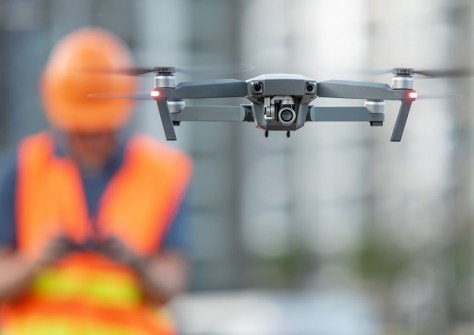
By Jonathan Nally
The federal government has announced $18.5 million in funding to support the design and delivery of up to 28 microcredential courses from 18 universities across the country, to help fill the skills gap in crucial industry sectors.
The successful courses were selected from more than 90 submitted in the first round of the Microcredentials Pilot in Higher Education program.
Importantly for the geospatial sector — which, like many other sectors, is facing a severe shortfall of skilled professionals — the program will include three courses of direct relevance:
- Drone Mapping and Navigation Systems — provided by the University of Southern Queensland (UniSQ)
- GIS for Professionals — UniSQ
- Building Information Modelling (BIM) — University of Technology Sydney (UTS)
A second round is planned within the next 12 months, under which more providers will be able to apply to take part in the Pilot.
Drones and GIS
UniSQ, one of the country’s major providers of tertiary surveying education, will offer the GIS for Professionals and Drone Mapping and Navigation Systems courses.
“The first offering will be in January 2024,” said Associate Professor Zahra Gharineiat, Associate Head of School (Research) in UniSQ’s School of Surveying and Built Environment. “The duration of each microcredential course is yet to be decided but is expected to run over one trimester.”
The GIS for Professionals course will be conducted online, while the Drone Mapping and Navigation Systems course will be a mixture of online and in-person attendance, with Gharineiat saying that there will be no educational prerequisites and “we estimate an enrolment of 60 students per course for the pilot, totalling 120 students”.
The surveyor profession (ANZSCO 232212) is on the shortage list of The National Skills Commission’s 2022 Skills Priority List in all states and territories. “These microcredential courses will equip participants with the necessary skills to pursue careers in surveying and spatial science, as well as other fields such as mining, agriculture and environmental sectors,” said Gharineiat.
Participants who complete the Drone Mapping and Navigation Systems course will also receive remote pilot license training delivered by an industry partner.
In addition, participants who complete one of these courses will receive credits towards two courses in UniSQ’s surveying and GIS programs, while those who complete two microcredential courses will gain credits toward four courses in those programs.
Building skills
Dr Julie Jupp, Associate Professor and Digital Engineering lead at UTS’ School of Civil and Environmental Engineering at UTS, said “Infrastructure engineering and construction reflect a real need and a real urgency for microcredentials targeting professional learners, and more so than ever in the digital engineering skills space.”
UTS’ Building Information Modelling microcredential course, while it comes under the banner of BIM, will actually be a Certificate in Digital Engineering (Infrastructure).
“It’s designed to attract students from various engineering fields, in infrastructure and civil works projects, regional and metro areas, with or without undergraduate qualifications,” said Jupp.
“It focuses the national digital engineering policy principles that are going to ensure that students, regardless of their educational backgrounds [but] whilst still being in the field of engineering and construction, develop competencies in data governance, in information management, and in various model-based technologies and workflows.”
According to Jupp, the course is aligned with the highly successful Transport for NSW approach to digital engineering.
“We’ve really taken a cue from their very well-documented standard that prescribes a data model for all the core disciplines… so moving beyond a BIM-centric approach to include survey and GIS.”
“It really does reflect that industry identified need to position core digital engineering competencies as a foundational field of study for modern infrastructure and civil works projects. Open BIM is a big part of that, where we see teaching of open standards as a core enabler of collaboration and communication.”
The roughly 15-week course will begin in 2024.
“The first offering of the course will be an online delivery format, and we’ll look at demand so as to potentially provide a hybrid [online/in person] offering,” said Jupp.







